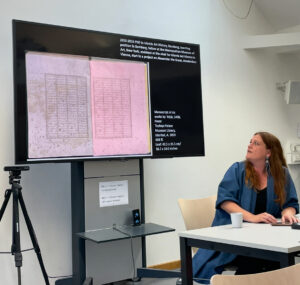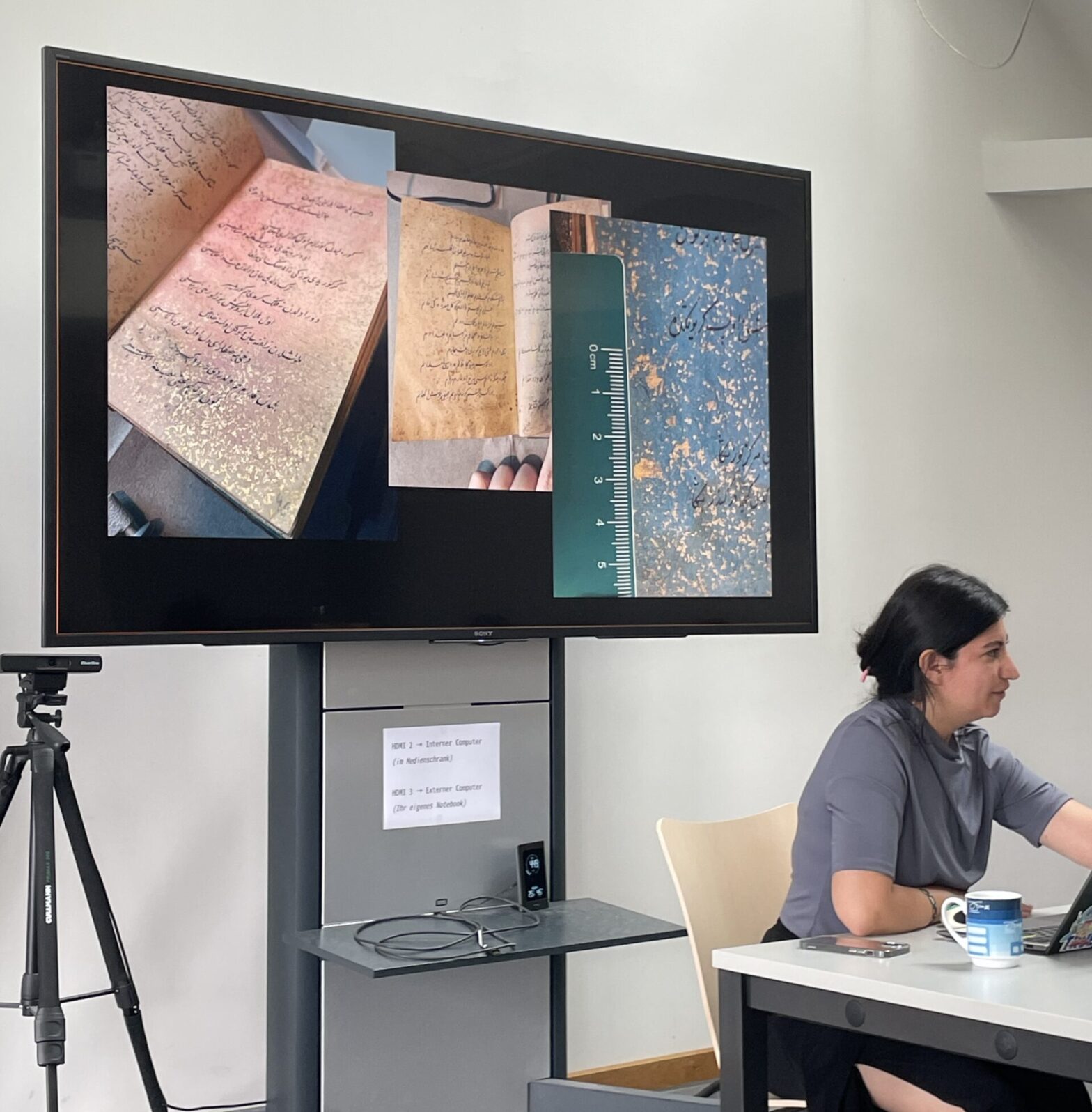On 25th and 26th July, Ilse Sturkenboom’s once-per-term colloquium took place, bringing together all research members of the team to present their current work related to decorated paper.
The first day began with a presentation by Negar Kazemipourleilabadi, who spoke about the Dīwān-i Muhibbīmanuscripts and how the discovery of a single manuscript in Warsaw inspired the topic of her PhD. Her research explores the artistic context and production of these manuscripts in the Early Modern period. She shared captivating images from her study trips, featuring Dīwāns with vibrantly coloured pages adorned with gold- and silver-sprinkled, as well as gold-dusted, paper. With a background in conservation, she also explained the technical processes behind the application of gold, including methods such as using a sieve or saltshaker for gold flecking. She expressed her intention to delve deeper into cultural interconnections, the relationship between art and power, and systems of patronage and workshop production – an incredibly promising research direction.

Yih-chuen Liao followed with an engaging presentation on the Chinese connection to decorated papers in Persianate manuscripts of the 15th and 16th centuries. She highlighted that no one has yet attempted to compile the corpus she aims to build. Drawing on medieval Chinese primary sources, she discussed gold-decorated Chinese paper (Jin Hua Zhi) and surviving examples from the period, including those with imperial associations. Her talk offered valuable insights into gold embellishments and the depiction of birds found in woodblock-printed Chinese papers – elements that are of particular relevance to the project. She concluded with an outline of possible avenues for future research.

On the second day, Ilse Sturkenboom gave a recap of her career so far, and how she came to study Chinese decorated paper and its relations to Persian manuscripts. She also presented her current research aims and discussed how the project is developing.

Later, Theresa Zischkin gave a talk focused on manuscripts featuring stencilled designs. She addressed the challenges posed by definitions, techniques, and the tools required for stencilling, while also drawing comparisons with examples from Japan and Poland, where stencil applications appear on textiles and wood. She then presented a series of case studies showing repeated use of the same stencils, the impressive variety of stencil patterns, and their application across different manuscript formats – analysed through the project data collected during various study trips.
Stay tuned for further research travels in August to England, Uzbekistan, and the Netherlands!
